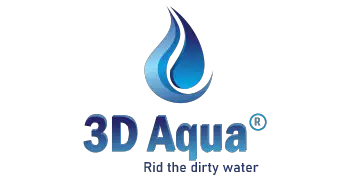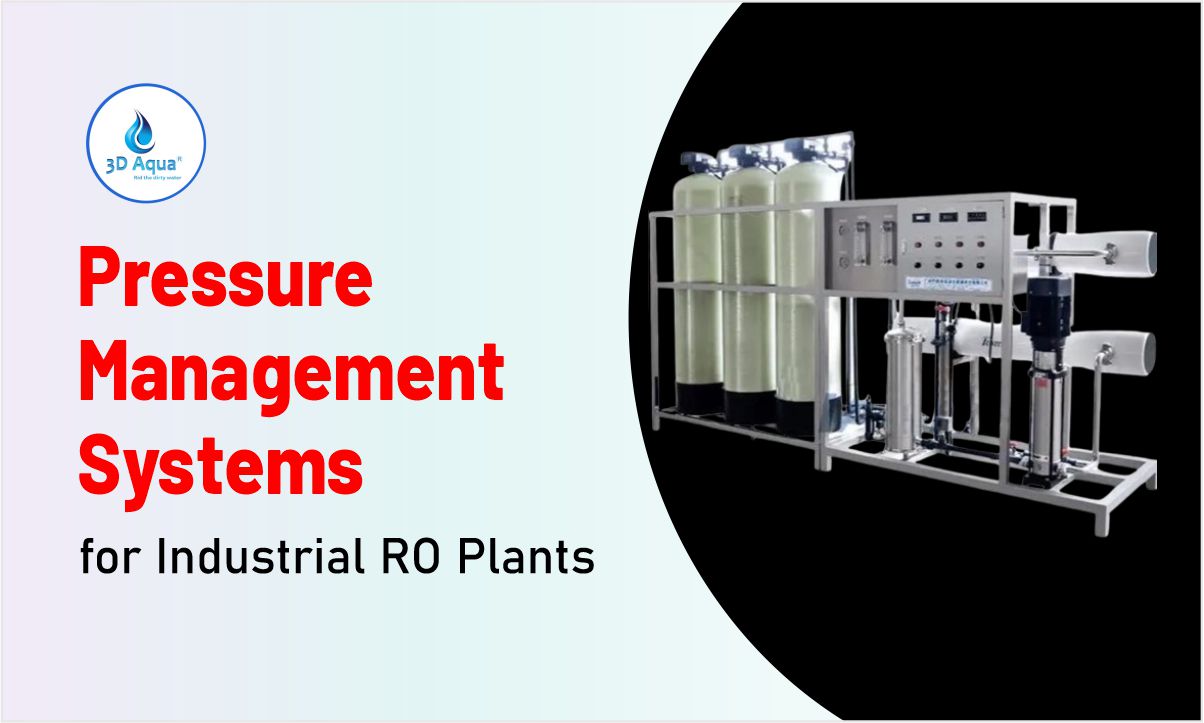Industrial Reverse Osmosis (RO) plants are integral to water purification across various sectors, ranging from manufacturing and pharmaceuticals to agriculture and municipal water treatment. As water demand increases globally, these systems face rising pressure to provide high-quality water while maintaining cost efficiency. In this context, pressure management systems have become critical to the smooth operation of RO plants. These systems are designed to control the pressure exerted on water as it passes through specialized membranes, removing impurities and ensuring that the plant operates efficiently.
The success of an industrial RO plant is often determined by how effectively it manages the pressure throughout the water treatment process. Not only does the right amount of pressure optimize water production, but it also prevents damage to expensive equipment and extends the lifespan of critical components such as membranes and pumps. The evolution of pressure management technology in industrial RO systems has significantly impacted operational performance, offering advanced features such as smart monitoring, automated adjustments, and preventive maintenance.
The Role of Pressure Management in RO Systems
Pressure management in industrial RO plants refers to the technology and processes involved in controlling the force used to push water through membranes. Reverse Osmosis relies on high pressure to force water through a semipermeable membrane, where contaminants such as salts, bacteria, and other impurities are filtered out. However, if the pressure is not properly controlled, it can result in several issues:
- Membrane Damage: Excessive pressure can cause mechanical stress on membranes, leading to damage or premature failure.
- Energy Waste: Unnecessary high pressure increases energy consumption, making the system less efficient.
- Reduced Equipment Lifespan: Over-pressurization can put unnecessary strain on pumps and valves, resulting in higher maintenance costs and reduced equipment lifespan.
Therefore, effective pressure management is crucial for balancing water quality, energy consumption, and equipment longevity. With the advent of automation, pressure management in industrial RO plants has moved beyond traditional manual control to sophisticated systems capable of continuous monitoring, real-time adjustments, and predictive maintenance.
Automated Pressure Control: Revolutionizing RO Plant Operations
Automated pressure control technologies have transformed the way industrial RO plants function. Modern automated systems are equipped with advanced sensors and smart control algorithms that allow them to monitor and adjust pressure levels in real-time. This ensures that the system operates within optimal pressure ranges, regardless of changing conditions in the plant or variations in the feed water.
1. Dynamic Pressure Adjustment
One of the most innovative features of modern pressure management systems is dynamic pressure adjustment. These systems are designed to respond to real-time conditions such as variations in water quality, flow rates, and membrane performance. The pressure control system continuously adjusts the pump speeds to maintain optimal pressure levels, ensuring a constant supply of purified water without overburdening the system.
Dynamic adjustment of pressure offers several benefits:
- Energy Savings: By adjusting pressure in response to real-time conditions, energy consumption is optimized, reducing overall operating costs.
- Membrane Protection: Excess pressure can damage membranes, so adjusting the pressure to match system needs helps protect these critical components.
- Increased System Efficiency: Maintaining pressure within the ideal range ensures that water production targets are met without unnecessary strain on the system.
2. Feed Pressure Optimization
The feed pressure refers to the initial pressure applied to water as it enters the RO system. Optimizing feed pressure is crucial for both energy efficiency and membrane longevity. Smart controllers monitor the characteristics of the incoming water, including temperature and salt content, and adjust the pressure levels accordingly. This optimization ensures that:
- The pressure is sufficient to facilitate proper filtration.
- Energy consumption is minimized by preventing over-pressurization.
- Membrane stress is reduced, extending their lifespan.
Feed pressure optimization prevents pressure spikes that could otherwise cause damage to the membranes or lead to system shutdowns. By adjusting the feed pressure based on real-time data, plants can achieve a balance between water quality and energy consumption.
3. Pressure Vessel Monitoring
In industrial RO plants, multiple pressure vessels are often employed to maximize water purification efficiency. Each vessel must maintain consistent pressure levels to ensure the system functions optimally. Advanced pressure management systems are equipped with pressure vessel monitoring capabilities, which track the pressure across individual vessels.
Key features of pressure vessel monitoring include:
- Early Detection of Problems: Sensors measure pressure differences between vessels, identifying issues such as scaling or fouling, which could affect performance.
- Flow Pattern Adjustments: The system can adjust the flow of water to individual vessels to ensure uniform pressure distribution.
- Automated Cleaning Cycles: When fouling or scaling is detected, the system can trigger cleaning cycles to maintain performance without manual intervention.
Pressure vessel monitoring helps prevent costly repairs, reduces downtime, and ensures that the RO plant operates smoothly with minimal interruptions.
Energy Recovery Devices: Boosting Efficiency and Reducing Operating Costs
Energy consumption is a significant cost factor in industrial RO operations, especially in large-scale plants that treat seawater. The high pressures required to push water through RO membranes demand considerable amounts of energy. Energy recovery devices (ERDs) are designed to capture and reuse pressure energy within the system, significantly reducing energy costs while maintaining system efficiency.
1. Pressure Exchangers
One of the most common types of energy recovery devices used in RO plants are pressure exchangers. These devices transfer energy between the concentrate stream (the water rejected by the membrane) and the feed stream (the incoming water). The exchange process utilizes the high-pressure concentrate water to increase the pressure of the feed water, reducing the need for additional pumping power.
Modern pressure exchangers are highly efficient and can recover up to 98% of the energy contained in the concentrate stream. This results in a dramatic reduction in energy consumption, particularly in seawater RO applications, where high pressures are needed to overcome the salinity of the water.
2. Turbochargers
Turbochargers are another type of energy recovery device commonly used in RO systems. These devices convert the pressure energy in the concentrate stream into mechanical power, which is then used to drive the feed pumps. By harnessing the power of the concentrate stream, turbochargers reduce the amount of electrical energy required to operate the system.
The integration of turbochargers in RO plants offers several advantages:
- Reduced Electrical Power Consumption: By using mechanical power to drive pumps, the need for electrical power is significantly reduced.
- Minimal Maintenance: Modern turbochargers are designed for reliability with low maintenance requirements, ensuring consistent performance over time.
- Cost Savings: The reduction in energy consumption leads to substantial cost savings over the lifetime of the plant.
3. Energy Recovery Control Systems
To optimize the performance of energy recovery devices, many modern RO plants are equipped with energy recovery control systems. These systems monitor the overall energy needs of the plant and adjust the operation of the recovery devices accordingly. By balancing energy recovery with the overall demands of the system, these control systems ensure that energy is not wasted while maintaining optimal pressure levels throughout the plant.
Smart energy recovery control systems also track the energy savings generated by the recovery devices, providing operators with detailed reports on the financial benefits of energy recovery. This helps plant managers make informed decisions about further upgrades or investments in energy-saving technologies.
Preventive Maintenance: Safeguarding Long-Term Plant Performance
Preventive maintenance is a cornerstone of modern industrial RO plant operations. Proactive monitoring and diagnostics enable plant operators to identify and address potential issues before they escalate into costly repairs or system failures. Pressure management systems play a key role in this process by providing real-time data and predictive analytics.
1. Pressure Trend Analysis
Pressure trend analysis is a powerful tool that tracks the pressure levels within the RO system over time. By analyzing pressure trends, operators can detect subtle changes that may indicate developing problems such as membrane fouling, scaling, or pump inefficiencies. This allows for timely interventions that prevent larger failures.
Key benefits of pressure trend analysis include:
- Predictive Maintenance: By identifying trends before they lead to major issues, maintenance teams can schedule repairs or replacements proactively.
- Optimization of Maintenance Resources: Automated alerts and data-driven insights allow operators to plan maintenance activities more efficiently, minimizing downtime and resource wastage.
- Improved System Reliability: Consistent pressure analysis ensures that any issues are addressed before they disrupt the plant’s operation.
2. Membrane Performance Monitoring
Membranes are the heart of an RO system, and their performance is directly tied to the success of the plant. Membrane performance monitoring tools track key parameters such as differential pressure and salt rejection rates. By monitoring these parameters, plant operators can identify when membranes are underperforming, whether due to fouling, scaling, or wear and tear.
Advanced monitoring systems allow for:
- Early Detection of Issues: Any drop in membrane performance can be identified early, allowing for cleaning or replacement before the issue worsens.
- Operational Adjustments: The system can automatically adjust operating conditions (such as feed pressure) to protect membranes and extend their lifespan.
- Optimized Cleaning Cycles: The system can trigger cleaning cycles when needed, ensuring that membranes are properly maintained without unnecessary interruptions.
3. Equipment Health Tracking
In addition to monitoring membranes, modern pressure management systems also track the health of critical equipment such as pumps, valves, and motors. By monitoring parameters like vibration, temperature, and power consumption, the system can identify early signs of equipment failure.
Benefits of equipment health tracking include:
- Minimized Downtime: Preventing unexpected failures helps maintain consistent plant operations.
- Cost Savings: Timely repairs and optimized replacement schedules reduce the need for expensive emergency repairs.
- Improved Maintenance Planning: Health tracking data provides insights into the condition of equipment, allowing for better resource allocation and maintenance scheduling.
Conclusion: The Future of Industrial RO Plants
As the demand for clean water continues to grow, industrial RO plants must evolve to meet these challenges while keeping costs down and maintaining high water quality standards. Advanced pressure management systems offer significant benefits by optimizing energy consumption, protecting equipment, and enhancing the overall efficiency of the RO process.
By implementing automated pressure control, energy recovery devices, and preventive maintenance solutions, industrial RO plants can achieve higher levels of performance, reduce operating costs, and extend the lifespan of critical components. As technology continues to advance, the future of pressure management in RO plants looks even more promising, with smarter systems, greater efficiency, and even more cost-effective solutions on the horizon.
Upgrade Your Industrial RO Plant Today
At 3D AQUA, we understand the complexities of industrial RO operations and pressure management. Our team of experts designs custom solutions that meet the specific needs of your plant, optimizing pressure control, energy use, and equipment longevity. Whether you are looking to improve an existing system or upgrade to the latest technology, we can help.
Contact us today to learn how better pressure management can improve your plant’s performance and efficiency. Reach out via our website or call our technical team for a personalized consultation.

